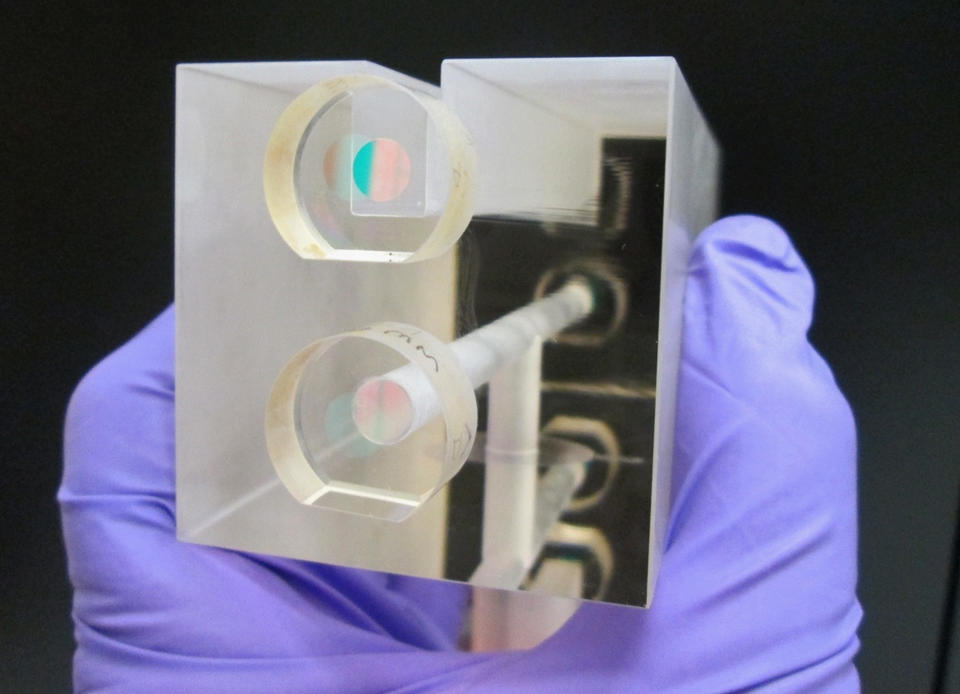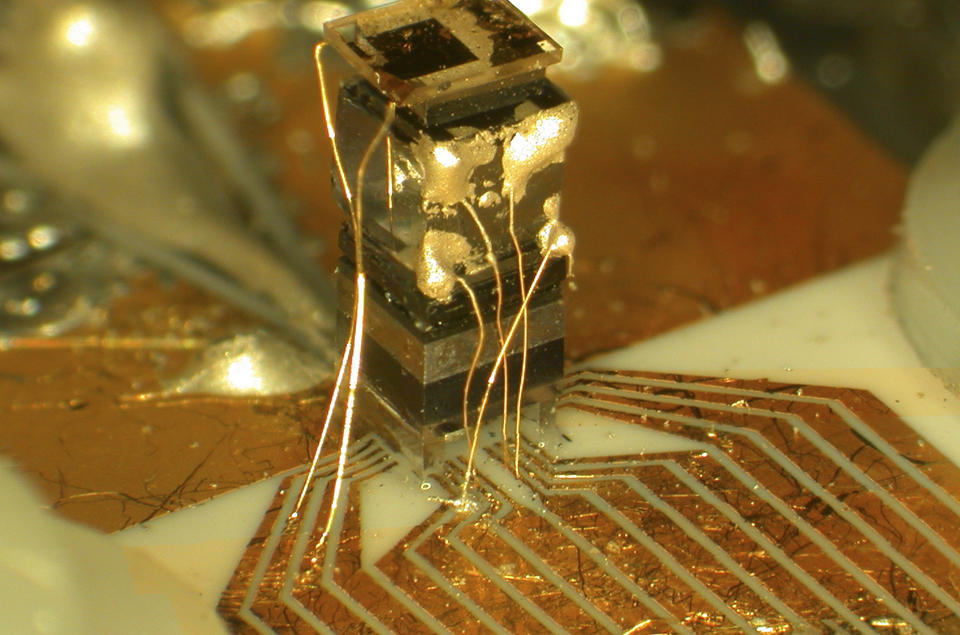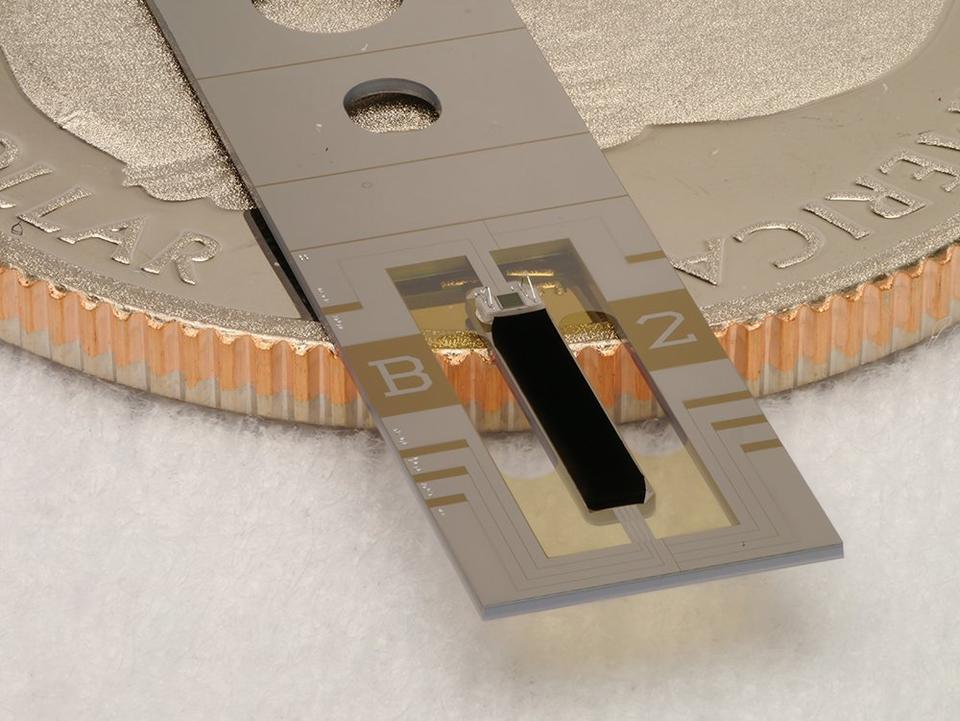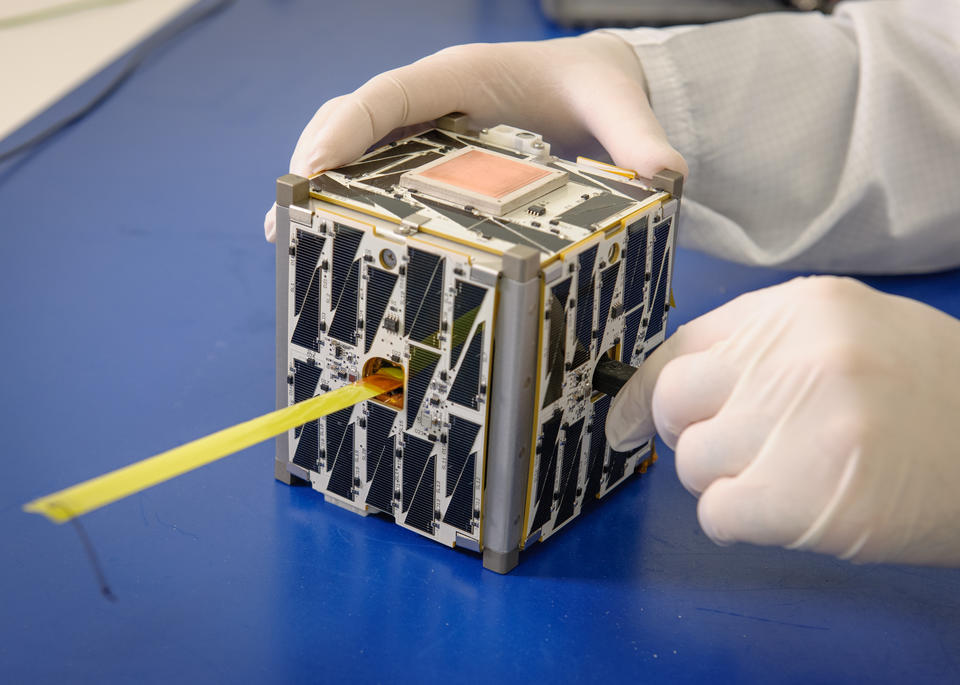Aerospace
Imagine you’re performing maintenance on an Apache helicopter, known for its ability to fly low while surveying terrain. The helicopter gauges its altitude by relying on pressure sensors — increases in pressure means lower altitudes. But what if your pressure sensor is throwing a fit? First and foremost, you have to fix the pressure sensors, which could mean weeks or months of downtime for your craft. Second, you have to make sure that the pressure-measurement equipment in your maintenance shop is adjusted, or calibrated, correctly so that it’s giving reliable readings on whatever is going wrong with your helicopter’s sensors.

To address both of these kinds of problems, the NIST on a Chip program is developing ultraprecise pressure sensors — based on fundamental principles of quantum science — that could fit on aircraft. In addition to onboard instrumentation, these pressure sensors could be used in maintenance facilities. Because their accuracy derives from measurements of quantum phenomena, they never have to be shipped to a service depot for periodic calibration.
Not only could quantum pressure sensors lead to faster servicing of military aircraft, but they could be highly useful for commercial aviation. Onboard quantum-based pressure sensors could allow planes to more precisely measure their altitude. This could have economic benefits: They could enable air traffic controllers to safely reduce the minimum required vertical distance between airplanes, potentially reducing fuel costs, delays and holding patterns around airports.

Aerospace vehicles must make ultrasensitive temperature readings both on the inside and outside environments. Temperature measurements inside engines and fuel systems can detect early signs of malfunctions. Yet many places inside aircraft are hard to access with conventional technology. One solution is to use photonic thermometers, which are being developed at NIST. Their measurements are sent by light beams through tiny channels in silicon, with dimensions in the range of a few hundreds of billionths of a meter. And their readings are also guaranteed to be accurate according to the principles of quantum physics.
In navigation, NIST on a Chip promises to supply revolutionary technologies. Aircraft need backup navigation systems when GPS fails, as do missile-guidance control systems. NIST is developing chip-scale acceleration-measurement devices that could provide backup navigation systems to carry out these functions. NIST is also pioneering radically new designs for gyroscopes that use extremely small clouds of trapped atoms to detect super-tiny directional and rotational changes simultaneously in three dimensions.
Such devices could enable accurate navigation for aircraft by giving them a way to stay on course when no visual or electronic guidance system is available. And of course, GPS relies on a network of satellites sending out signals timed by atomic clocks. The GPS receivers in aircraft need their own onboard timing source to ensure that their reception is precisely synchronized with the GPS, and chip-scale atomic clocks being developed by NIST can provide dramatically improved accuracy for that task.

Aerospace manufacturing requires precision measurements of many quantities, including length, when assembling and installing critical components. However, current high-end instruments for measuring length based on the wavelength of laser light can be bulky and require time-consuming calibrations of costly equipment. NIST is working on a mass-producible, inexpensive chip-scale device to provide a wavelength reference standard for those calibrations. It relies on the fact that the international standard for the meter is based on the distance that light travels in a fraction of a second. And the speed of light is a fundamental constant of the universe, so devices that rely on it never need to be calibrated.
Moving into outer space, tiny satellites demand tiny measurement instruments, suggesting a growing need for “NIST on a Spaceship.” CubeSats — small boxy satellites with dimensions as small as 10 centimeters on a side — are already using NIST on a Chip instruments: bolometers that measure the power of electromagnetic radiation, specifically the irradiance of the sun. The final frontier promises to be a major growth area for quantum-based, chip-scale measurement equipment.



